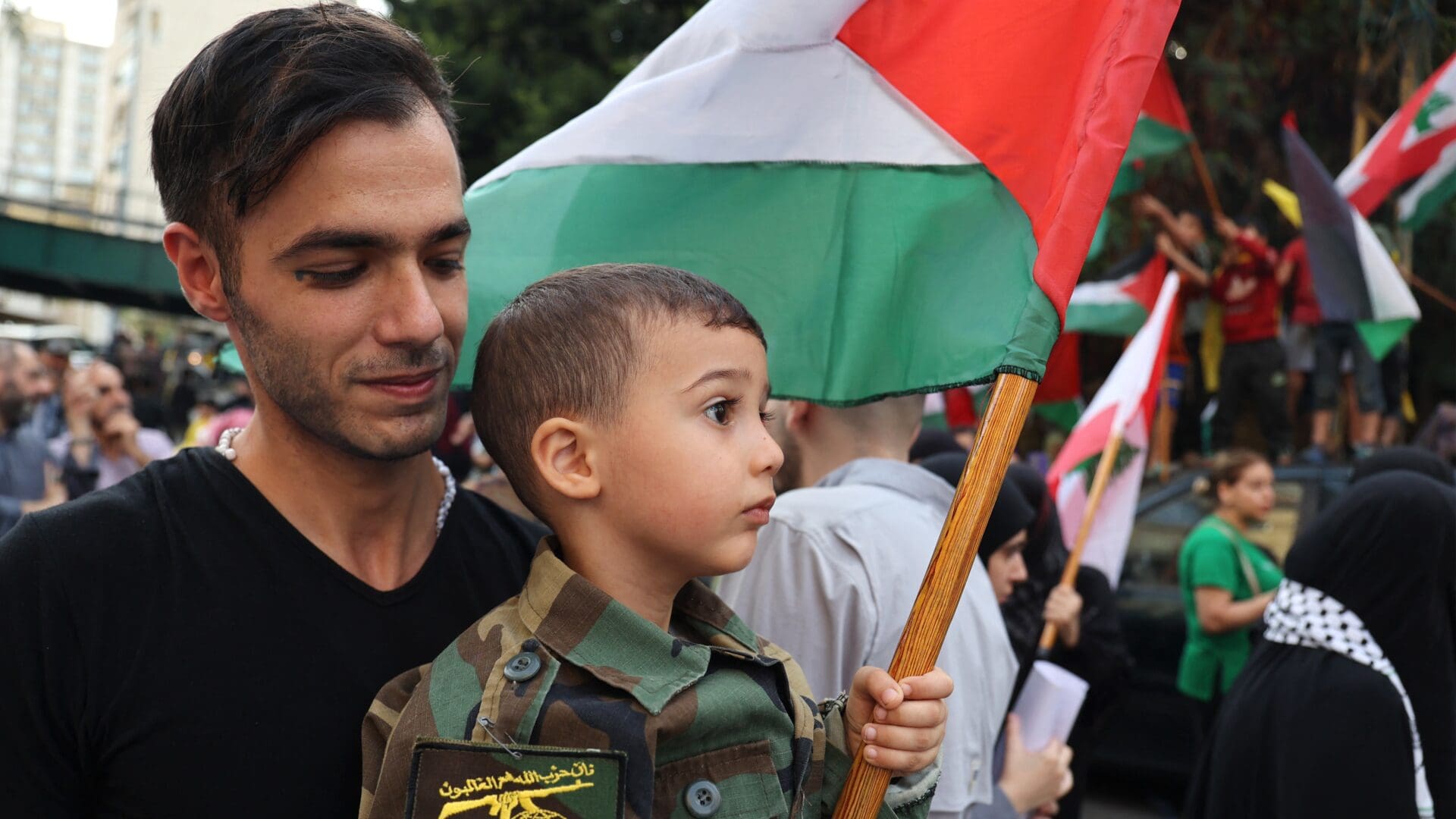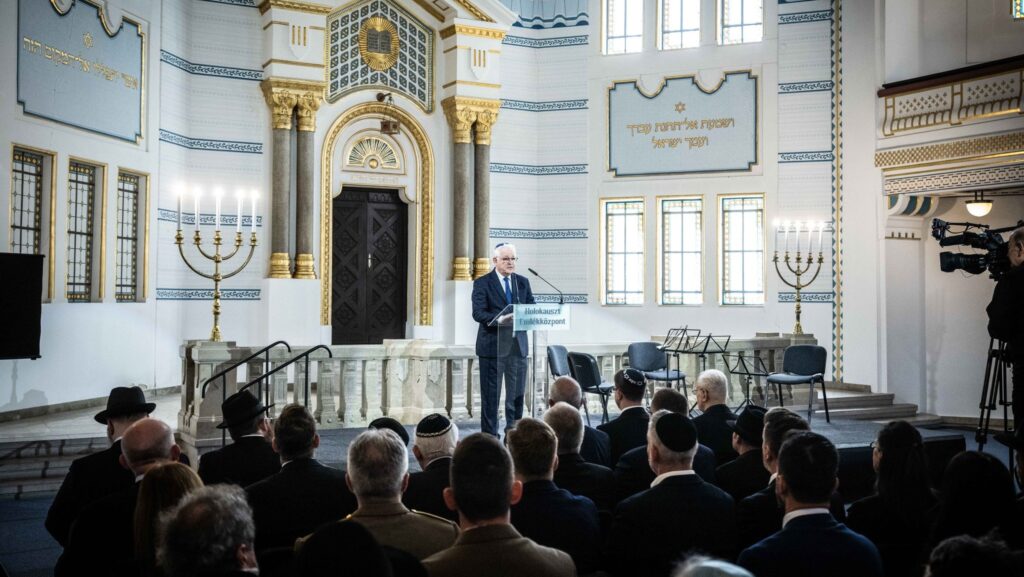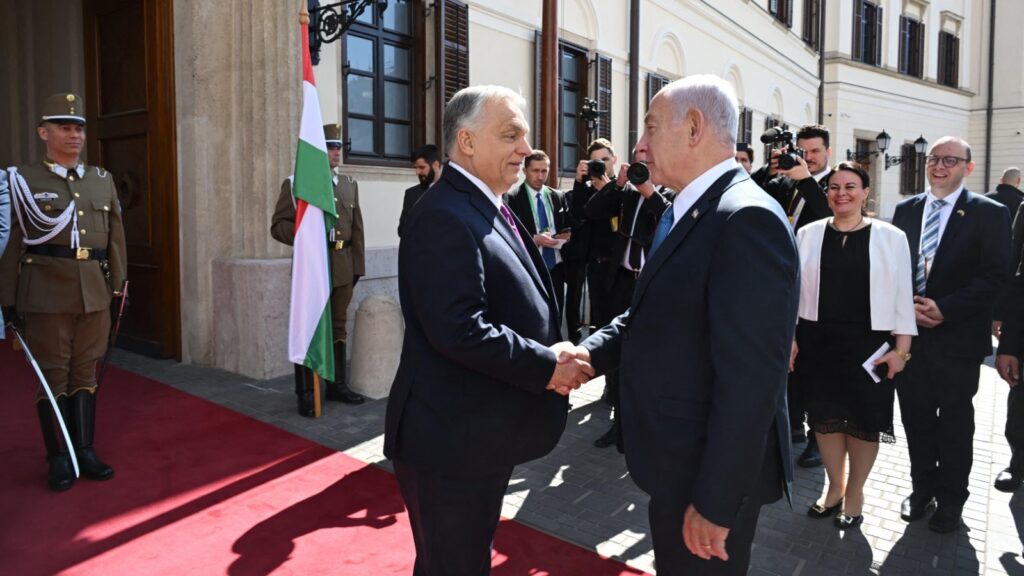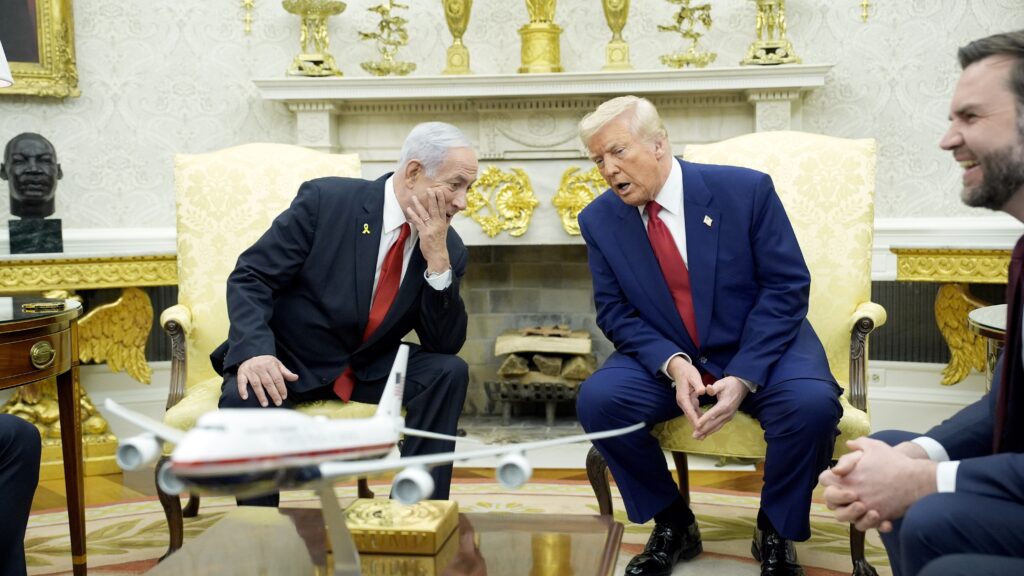Israel has been battling Hamas since 7 October. After the terrorists broke out of Gaza and killed countless Israeli civilians in the southern part of the country, an intense conflict ensued around the Palestinian exclave. However, there is a nascent second front as well. Raising suspicions about Iran having orchestrated the whole attack, another important regional proxy of Tehran, Hezbollah also commenced rocket attacks on Israel. There is the possibility of a real second front line forming at the Israeli-Lebanese border.
But what is Hezbollah, and why is it battling Israel?
Hezbollah (literally ‘Party of Allah’, or ‘Party of God’) is a Shia Islamist terrorist organization, founded around 1985, in the wake of the Lebanese Civil War (1975–1990). By the early 2000s it grew powerful, currently operating its own tv and radio station, own social services, and on top of that, regularly being represented in the Lebanese parliament and even in the government of the country.
Most importantly, Hezbollah controls Southern Lebanon, having transformed it into a ‘state within a state’.
During most of the twentieth century, after it gained independence in 1943, Lebanon was dominated by Sunni Muslims and Christians. Shia Muslims, concentrated in the Southern part of the country, were among the poorest and most disadvantaged groups. Initially, left-wing movements, like the Communists or Arab Socialists, tried to champion their cause. During the later decades of the twentieth century, the Amal Movement emerged as the first explicitly Shia advocacy movement. However, it was too secular for many of the faithful, which gave birth to a more pious alternative, Hezbollah.
The Beginnings
Much like in the case of Hamas, Hezbollah’s genesis is also tied to Islamic charity and cultural movements. Musa Sadr, a leading cleric founded the ‘Movement of the Deprived’ in the 1970s. He used the group to advocate for better conditions for the Shia, both politically, and culturally. The organization created and funded schools and hospitals in the Shia-dominated parts of the country, and Sadr accepted the Lebanese state as legitimate, although many, younger clerics opposed that.
A number of factors gradually drove Shia Muslims closer to militant radicalism. During 1975, sectarian conflicts peaked, and a civil war broke out. In 1979, an Islamic revolution prevailed in Iran, creating a theocracy, which aggressively pushed its ideology onto the region, and emboldened militant Shias both via example and funding. In 1982, Israel invaded Lebanon, to oust the Palestinian Liberation Organization (PLO) and its militants from country. This made the already chaotic situation of the Lebanese Civil War even worse.
The Lebanese Civil War was a long and bloody sectarian conflict pitting Israeli-backed Christians, Shias supported by Iran, and Sunnis against each other,
and against the country’s fragile, internationally recognized government. Initially, the Shias lacked their own faction, mostly siding with the Arab nationalists. However, nascent Shia militias under various names were already present.
Lebanese Civil War and the Hezbollah
It was in the context of these events that Hezbollah was founded. In the early 1980s, Iranian troops arrived in Lebanon to train and equip Shia militants. It united and eventually amalgamated the various Shia groups. Initially, these forces ran under the name ‘Islamic Resistance in Lebanon’, as a coalition, and were allied with the Arab nationalist faction. However, in 1985, their leaders announced the formation of a unified organization, under the name Hezbollah. Sheikh Subhi Tufaili was elected as their first Secretary-General.
The new faction designated its main goal as expelling Israel and Western peacekeeping forces from Lebanon. Hezbollah mostly clashed with the Israel Defence Force (IDF), and their Christian allies. Battling Israel gave a patriotic flavour to Hezbollah, and thus their popularity among the local population grew.
However, their fighters were also engaged in sectarian infighting, especially with their Syrian-backed Shia rivals, the Amal Movement.
Apart from regular battlefield combat, Hezbollah also committed countless terrorist acts.
Their agents kidnapped Western officials, or detonated their cars, since the organization perceived Western presence in Lebanon as pro-Israeli. Hezbollah was the first group ever to use suicide bombing as a tactic. As early as 1983—still being in its nascent form—Hezbollah bombed barracks of the international peacekeeping forces in Beirut. This attack inspired many others, and the organization perpetrated dozens of suicide attacks on Israeli targets as well, but also on Israeli allies. Other Islamist groups also appropriated this method, giving birth to one of the most characteristic and brutal tactic of Islamist terrorism.
In 1989, the Taif Agreement resolved the Lebanese conflict, and called for disarming and disbanding the militias. However, Hezbollah refused to comply, arguing that Israel occupying the so called ‘Security Belt’ in Southern Lebanon made it necessary for them to carry on fighting. Using Israeli presence as an excuse, the group remained in arms, and kept the Shia belt of Lebanon under its control to this very day.
Israeli Occupation and Continuous War
Israel kept Southern Lebanon occupied, together with their Christian allies, the South Lebanon Army, which also operated the quasi-government of the area, while Hezbollah kept executing terrorist actions and attacks on the Israeli forces. Their main tactic was hit-and-run raids on Israeli soldiers and convoys, as well as targeted assassinations. In 1996, Israel executed Operation Grapes of Wrath, bombing military and civilian targets in Lebanon. It backfired, as hitting non-combatants enraged the Shias, who thus swelling the ranks of Hezbollah. The organization was also strengthened by the fact that in accord with the 1989 agreement, the other militias were slowly disbanded. Lebanon also expelled the Palestinian militants from its territory around that time. Thus,
by the 1990s, Hezbollah was able to pose as the last and only bulwark against the Israeli invaders.
During the late 1990s, the continuous activity of Hezbollah created an unsustainable situation for Israel, and in 2000, it decided to leave the area. This skyrocketed the popularity of the Shia group. Most of the Lebanese and wider Arabic societies credited Hezbollah for ‘liberating’ Southern Lebanon. Since Hezbollah entered the vacuum left by the Israeli forces, the territory it controlled also grew.
Israel, however did not withdraw from a territory called the ‘Shebaa Farms’. This mostly empty area gave Israel a tactically important bridge between its core territory and the occupied Golan Height. While it is not Lebanese territory, according to Israel and the UN, Lebanon claims it as its own. This territorial dispute gave Hezbollah an excuse again, to remain armed, and to continue attacking Israeli positions.
This, usually low-intensity conflict culminated in the 2006 War, when Hezbollah attacked an Israeli patrol, killing and abducting soldiers, as well as firing rockets into Israeli territory. This ensued Israeli attacks on the territory. The conflict was concluded without a clear winner, but Hezbollah claimed victory, boosting its popularity further. By this time, the terrorist group was bigger and stronger than the official Lebanese army. Their rule of all Shia-majority territories, even outside of the South, was consolidated.
Recent Events
During the 2000s, Hezbollah conducted many terrorist attacks, both successful and unsuccessful. The most notable was the 2005 assassination of then Prime Minister Rafic Harari, which provoked protests in the country.
In the 2010s, Hezbollah’s attention shifted to Syria. As many other Iranian proxies, it also sent fighters to battle rebels and Sunni jihadists, on behalf of the government of Assad. Their troops were also deployed against the Islamic State, which also boosted their popularity among the Shia and the wider Muslim world. However, their presence in the country has led to continuous Israeli rocket attacks on Syrian territories.
As the Syrian conflict de-escalated, Hezbollah could focus on its home front again. Therefore, in October 2023, when Hamas attacked Israel, it also had the opportunity to declare ‘solidarity’ with the terrorist organization and resume rocket attacks of their own. It is yet to see if this will revive in a full-fledged fashion their armed conflict with Israel.
The Ideology of Hezbollah
An organization inspired mainly by the Iranian Revolution and its ideas, Hezbollah is a Shia radical party, which calls for Islamic theocracy, and a legal system based on sharia. Their original manifesto listed Ayatollah Khomeini among the people they respect and even obey. It also called for Christians to convert to Shia Islam. During the 1980s, their current leader, the charismatic Hassan Nasrallah spoke about the necessity to absorb Lebanon into a greater, ‘all-Islamic republic’.
However, since the 1990s, Hezbollah has undergone a process that experts refer to as ‘Lebanonization’. It has somewhat watered down its Islamist ideology and has made them accept the multi-confessional nature of Lebanon. Since then, the organization has focused on electoral politics, charity, and battling Israel. It must be noted that these are all things that have boosted its popularity.
The only ideological tenet Hezbollah has remained uncompromising in is their hatred of Israel.
The organization considers the Jewish state an illegitimate entity, which ‘usurps’ land, and occupies not only Palestinian territory, but Islamic holy places, too. Hezbollah rejects any reconciliation with Israel and sees ‘armed resistance’ as the only way to defeat it.
Conclusion
Hezbollah has undergone many ideological changes since its formation. In addition to the slight moderation of their methods, the organization has gained popularity in Lebanon, and strengthened its armed forces. However, both in terms of ideology and action, some aspects remain unchanged. Hezbollah is an Iranian proxy, bound to Tehran by funding and ideology. It is also the originally self-proclaimed, but by now widely accepted, champion of Shia Muslim interests in Lebanon and the strongest enemy of Israel. Hezbollah is set to continue to be a violent adversary of the Jewish state in the future, too.








